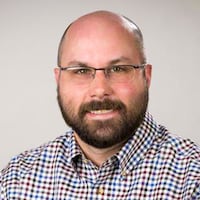Those members join groups that are attached to either a local community or a company hoping to improve skills including public speaking, evaluating performance and keeping composure when answering questions in an interview setting. Meetings run at regular intervals (weekly, every other week or another chosen format) for memberships that usually range from a dozen to two dozen in individual clubs.
“In an economic downturn, people were and are looking to differentiate themselves,” said Daniel Rex, the Toastmasters International executive director. “Communication skills help with that.”
Founded in 1924 in the basement of a YMCA in Santa Ana, Calif., the group took the name Toastmasters because most of its members wanted to improve public speaking skills, especially giving toasts. As decades continued, more skills were incorporated into the program, including interviewing and critiquing the work of others.
Most new members want to first work on speaking in front of a group and overcome nerves.
“That’s what Toastmasters is so good about,” said Jody Davis-Curless, a member of the LexisNexis club of Toastmasters International who also oversees several other clubs in the region. “Yes, it’s working on speaking skills and learning how to present in an organized way. But people especially have a fear of getting up and talking in front of (other) people. It gives you some confidence to stand up and talk.”
A significant growth area for the organization is corporate clubs. Individual companies can form internal clubs for employees only, providing an option for extra training that is not required by the organization, he said.
In 2011, 537 new corporate clubs were formed throughout the organization. That was a 71 percent increase from the previous year.
“A lot of companies bring people in to give a seminar that’s a day long or a couple hours, but Toastmasters is ongoing,” Rex said. “It’s the experience of actually having regular practice.”
New members follow a predetermined course for earning distinctions based on the number of speeches they give or activities they do. In Ohio, clubs range from 55 members (A.M. Akron Toastmasters) to six (numerous clubs), signaling what officials call the range of needs from their membership.
The largest club in the region is the CIC Speaks Toastmasters Club in Fairfield, with 38 members, according to Toastmasters International data.
Some members span generations. Joanne Hawkins, a Distinguished Toastmaster (the highest level) in the Beacon Toastmasters Club in Beavercreek, first learned of the club from her father, who was a member in the 1950s. Women were admitted into clubs beginning in 1973.
“I’m an instructor, so the process of going through this really benefited me in my ability to talk spontaneously,” said Hawkins, a military logistics and foreign military sales instructor for the Department of Defense. “I can structure my lessons and deliver my materials. Nobody likes sitting in a class where the instructor is not speaking in complete sentences.”
Most club meetings include speeches, critiquing those speeches by the group and an impromptu question session, meant to simulate an interview environment or question-and-answer section of a presentation. Club members said those three facets combine to improve different levels of communication skills.
Those skills can translate to numerous industries, officials said. During a period when more business professionals are communicating through email, text message and mobile devices, comfort in in-person settings has increased in importance, which has almost certainly helped the club’s growth, they said.
“One woman in our club has her own business,” said Kathy Hayes, vice president of membership for Dayton United Communicators. “She told me, ‘Now I’ll go up and talk to anybody, ask people questions and come out of my shell.’ That’s what this club does. It makes people more comfortable.”
About the Author
